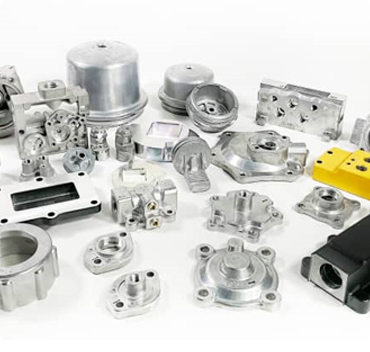Within the world of contemporary production, die casting is seen as a testimony to the union of artistic talent and science. It is the highest level of high-tech precision engineering. The fundamental principle behind die casting is an incredibly efficient process that revolutionized the manufacture of metal parts that are complex with unparalleled precision and effectiveness. From automobile parts to complex consumer electronic components, die casting has played crucial roles in shaping the items we use every day.
Die casting begins with a meticulous creation of the mold designed to meet exact specifications by using computers-aided design (CAD) software. The mold is the model of the final product making sure that every detail and contour is defined precisely. After the mold has been perfected the molten metal, usually zinc, aluminum, or magnesium is introduced into the cavity under the highest pressure to ensure that it covers every inch and cranny in the mold. This results in a perfect reproduction of the mold that is now ready for additional improvement.
One of the major benefits of die casting is in its capacity to make intricate shapes that have precision tolerances. It’s a feat which traditional manufacturing techniques are often unable to duplicate. Through the use of high-pressure injectors the process of die casting allows for complex and intricate parts, with no processing required after. This degree of accuracy is not only beneficial to the functionality of the finished product, but additionally streamlines manufacturing processes by reducing waste while also optimizing efficiency of the resources used.

Furthermore, die casting gives unbeatable versatility and can be used to support an array of different sectors and uses. For instance, whether it’s lightweight parts that are used in aerospace engineering or the complex casings used in consumer electronics, die cast is a top choice for delivering high-quality parts which meet the demanding requirements in contemporary manufacturing. Additionally, advances in the field of die casting are expanding its capabilities which has allowed for the manufacture of bigger parts, and expanding the limits of the possibilities. For more information please visit here https://www.senadiecasting.com.my/
Beyond the technical expertise, die casting also adheres to the concepts of sustainability and effectiveness. Through reducing waste materials and increasing production efficiency Die casting is an environmentally friendly alternative to conventional manufacturing techniques. Furthermore, the long-term and durability of parts made from die casting can contribute to the long-term sustainable of the product they’re used on, which reduces the necessity for replacements frequently and also reducing environmental impacts.
But, as with any other manufacturing procedure that involves die casting, it isn’t without problems. Initial setup costs could be considerable, which requires the purchase of specialized equipment and tools. In addition, reaching the level of precision desired demands a meticulous focus on detail as well as rigorous quality control procedures throughout the manufacturing procedure. But the benefits from die casting outweigh those challenges due to the capacity to create high quality components at a large scale.
